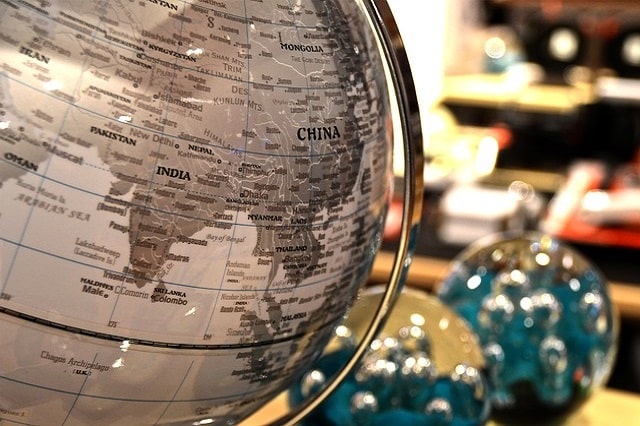 English available languages
English available languages
Countries by GDP and Economic Components (1970-2017)
While looking at the top countries by GDP is a useful big picture measure, it can also be informative to look at the components that make up an economy as well. Examining a country’s economic building blocks can tell us a lot about what stage of development the country is in, and where competitive advantages may exist.
Analyzing GDP by Sector
The race bar chart, by Number Story, is an entertaining historical look at the ranking of top countries by GDP, including the parts that make up the whole. Here is the latest data as of 2018, as well as the largest sector according to data from the United Nations’ industry classification database:
| Rank | Country | GDP (2018) | Top Sector (% of total) | 2nd Largest Sector (% of total) |
|---|---|---|---|---|
| 1 |  United States United States |
$20.6T | Other (55%) | Mining/Manufacturing/Utilities (15%) |
| 2 |  China China |
$13.6T | Other (36%) | Mining/Manufacturing/Utilities (33%) |
| 3 |  Japan Japan |
$4.9T | Other (43%) | Mining/Manufacturing/Utilities (23%) |
| 4 |  Germany Germany |
$3.6T | Other (48%) | Mining/Manufacturing/Utilities (25%) |
| 5 |  UK UK |
$2.5T | Other (55%) | Retail/Restaurant/Hotels (14%) |
| 6 |  India India |
$2.5T | Other (36%) | Mining/Manufacturing/Utilities (22%) |
| 7 |  France France |
$2.5T | Other (56%) | Mining/Manufacturing/Utilities (13%) |
| 8 |  Italy Italy |
$1.9T | Other (49%) | Mining/Manufacturing/Utilities (20%) |
| 9 |  Brazil Brazil |
$1.6T | Other (50%) | Mining/Manufacturing/Utilities (16%) |
| 10 |  Canada Canada |
$1.6T | Other (52%) | Mining/Manufacturing/Utilities (18%) |
| 11 |  South Korea South Korea |
$1.6T | Other (42%) | Mining/Manufacturing/Utilities (31%) |
| 12 |  Russia Russia |
$1.5T | Other (36%) | Mining/Manufacturing/Utilities (28%) |
| 13 |  Australia Australia |
$1.4T | Other (53%) | Mining/Manufacturing/Utilities (17%) |
| 14 |  Spain Spain |
$1.3T | Other (47%) | Retail/Restaurant/Hotels (19%) |
| 15 |  Mexico Mexico |
$1.2T | Other (34%) | Mining/Manufacturing/Utilities (24%) |
Why are “Other Activities” so dominant in this breakdown?
It’s because of the way GDP that components are classified as data in the UN industry classification system, which is laid out below:
- Agriculture, hunting, forestry, fishing (ISIC A-B)
- Mining, manufacturing, utilities (ISIC C-E)
- Construction (ISIC F)
- Wholesale, retail trade, restaurants and hotels (ISIC G-H)
- Transport, storage and communication (ISIC I)
- Other activities, such as finance, healthcare, real estate, and tech (ISIC J-P)
Although agriculture, construction, or manufacturing have been a bedrock for economies in the past, developed countries skew towards adding economic value in different ways today. Given that finance, government spending (healthcare, education, defense, etc.) and technology — all important modern industries — are included in “Other”, this makes the possibly outdated classification the biggest (and least useful) category to examine here. Nevertheless, there is still information we can glean from this animated breakdown of GDP, spanning a period of almost 50 years.

A More Granular Look at GDP
In the past, we’ve shown you high level visualizations that break down the world’s $86 trillion GDP by country, or even projections on the largest countries by GDP in 2030 in PPP terms.
However, the animated bar chart shows something more granular that is compelling in its own right. By observing the evolution of countries’ economic components over time, some interesting observations emerge that would normally be lost in the big picture.
Top 10 Countries by GDP: Japan’s Manufacturing Boom
At points during Japan’s heyday of growth during the 1980’s, manufacturing comprised nearly 30% of economic activity. By the mid-90s, this single segment of Japan’s economy was so valuable that, on its own, it would’ve placed fifth in the global ranking.
USA Leading the top 10 countries by GDP list
While other countries switch positions, reordering as economies boom and bust, the U.S. has handily remained in top position. Japan was the country that narrowed the gap between the first and second spot the most, though the country’s Lost Decade in the 1990s cut that ascension short. During the years between 1970 and 2017, the United States was at its most dominant in 2006 when its GDP was triple the size of Japan’s. Of course, in recent years China has narrowed the gap considerably.
China – a Star Rising in the East
As one would expect, the building blocks of China’s economy looked very different in the 1970s than today. The communist systems of the USSR and China are both easy to spot in the visualization. Agriculture played an outsized role, and industries like finance, real estate, and retail were understated compared to the profiles of countries that operated under a capitalist system. In 1980, as the first Special Economic Zones were being created, three-quarters of China’s economy was based on agriculture, resource extraction, and manufacturing. Even as recently as the early ’90s, China wasn’t in the top 10 despite being the world’s most populous country.
Of course, that situation changed drastically over the next two decades. By the dawn of the 21st century, China ranked fifth in the world, and a decade later, China surpassed Japan to become the second largest economy globally.
 English available languages
English available languages
